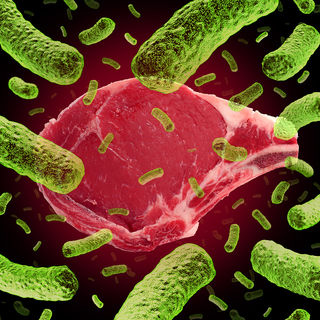
Obesity is a disease caused by hormone imbalances. So let’s talk hormones. The glands produce signaling molecules called hormones, which are informational substances that communicate with the organs via the circulatory system. Since we are 10% human cells and 90% symbiotic bacterial cells, gut microbes can make the same hormones and neurotransmitters that human cells make. Hormones influence or regulate every aspect of human physiology, behavior, mood, attitude, and emotion.[1]
Hormones are continuous, dynamic and sometimes seem random – but there is always a method to their madness. In a way, they are like emotional Twitterholics, who over-share, get into social-media-word-wars, block, get blocked, bully, get bullied, stalk and get stalked.
Eating is a hormonal expression

When hunger occurs, a person makes a conscious decision to eat right? Wrong. Actual hunger plays a minor role in when and why we decide to eat. Numerous hormonal systems tell us when to eat and when to stop. For example, the smell of food increases a person's desire to eat when they are hungry; once one has eaten, those same smells become nauseating. The smells are the same, but the hormonal response to the smells changed. When some people are stressed out they over eat, other people cannot eat; hormones express both behaviors. Therefore, the decisions to eat or not to eat, as well as what to eat are hormonal. [1]
If a person's hormones are imbalanced, or one's microbiome is under siege and producing rogue hormones and neurotransmitters to the organs and various systems, the news feed from the signaling molecules is fake news. Think of it as an election time meme storm on Facebook for an election that never ends. These imbalances or falsified signals cause the obesogenic conditions leading to obesity's immediate consequences such as severe weight gain.
Fat Storage
Fat storage is an involuntary bodily function, like one’s heartbeat. People do not have to remember to tell their hearts to beat because hormones do that. Hormones influence all of the automatic functions and systems in the human body.[1] However, we once believed (and some still do) the mere act of eating would result in fat storage without any influence from hormones – curious scientific thinking, which likely evolved from the caloric-deception discussed in Small Mistakes With Huge Consequences
Insulin
Insulin is the quarterback of metabolism and the difference maker in determining how we use digested food for energy. Beta cells, found in the islets of the pancreas, produce insulin and release it into the bloodstream. Digested carbs turn into glucose and enter the blood stream where insulin turns it into energy. So when one eats, their pancreas dispatches insulin into the blood where it connects with glucose, and together they travel to the cells. Insulin is critical in muscle, liver and fat cell absorption of the glucose. Insulin also causes muscle and liver cells to store excess glucose as glycogen, and it lowers blood glucose levels as well by reducing the amount of glucose the liver produces. [1-5]So insulin is not just a quarterback it is a triple-threat quarterback.
However, when a person develops Insulin Resistance muscle, fat, and liver cells do not absorb blood glucose effectively causing the pancreas to produce higher levels of insulin, which helps glucose penetrate the cells, but is problematic because insulin is the fat-storage hormone. Increased insulin also prohibits body fat metabolism, while increasing fatigue and sugar cravings[1].
Old Brains Stranded In a Strange World

Human technology and society changed rapidly, but human biology remained static. This discrepancy stranded the brain in a world that is too complex for it to function optimally. It also imposes constant stress on all humans in varying degrees, depending on the individual specifics of nature and nurture (genetics, epigenetics, maternal stress, developmental abuse, poverty, physical environment, toxins and more.) When these pressures of life become excessive, we develop Allostatic Load, and the protective mechanisms of stress regulation go from being helpful to being harmful.[6-8].
The Cortisol Connection
There are four types of allostatic load, only two of which concern this discussion: Cortisol levels failing to return to baseline, once the stressor no longer exists; or the Hypothalamic-Pituitary-Axis (HPA) and sympathetic nervous system not being able to recognize that cortisol levels have returned to baseline. [9-11]
I am wearing my skinny jeans as a hair scrunchie - and this is relevant, how? Well, when the stress response swings into action, one of the first things it does is increase blood glucose for quick energy to prepare for fight or flight. That is bad news because now the pancreas has to produce even more insulin, which makes a person fatter, more fatigued and crave sugar.
The stress response is subcortical, meaning by evolutionary design it does not think – its mission statement is “survive now and ask questions later.” Doing and not thinking increased the ancients’ survival odds because pondering whether that rustle was tumbleweed or a jackal could be the difference between talking about it at dinner and being dinner.

Regrettably, for humans today, the pathophysiology of stress is the same as it was for the ancients, but modern day threats are less likely to conclude with physical fight or flight. So we do not utilize the excess glucose that the ancients needed for the inevitability of fight or flight. Worse yet, the thinking part of the brain is automatically taken offline when the HPA engages.
We cannot tell our hormones to relax it is just bad breath in an elevator, not a bipolar mandrill off her meds. Not being able to communicate the decibel of a threat to your HPA is not good news in the modern world. The last thing, the overworked pancreas in an overweight person needs is increased blood glucose because the chronically elevated blood glucose and the increased insulin will make one fatter, more sluggish and eventually diabetic and vulnerable to other co-morbid conditions, such as massive localized lymphedema.
The downward synergy between insulin resistance and cortisol malfunction is the primary underlying cause of obesity.[1] The more stressed out people become, the more cortisol they produce and the more insulin resistant they become. Subsequently, weight gain increases and more collateral consequences occur, which further deconstruct lives. As one's world caves in, stress increases, escalating cortisol malfunction, which increases insulin resistance and the merry-go-round perpetually spins, faster, harder, and more and more out of control.
Loving A Broken Body discusses ways to get off the carousel, or at least bring it under control.
---Remain Fabulous and Phenomenal.
Join my email list to receive notifications of new posts
Huffington Post
The Los Angeles Times
UCLA Center for the Neurobiology of Stress
On Facebook
Dr. Gordon online
Twitter
References
1. Fung, j., The Obesity Code. 2016, Vancouver, BC, Canada: Greystone Books.
2. Gulati, S. and A. Misra, Abdominal obesity and type 2 diabetes in Asian Indians: dietary strategies including edible oils, cooking practices and sugar intake. Eur J Clin Nutr, 2017. 71(7): p. 850-857.
3. Koukias, N., E. Buzzetti, and E.A. Tsochatzis, Intestinal hormones, gut microbiota and non-alcoholic fatty liver disease. Minerva Endocrinol, 2017. 42(2): p. 184-194.
4. Henderson, M., et al., Influence of Adiposity, Physical Activity, Fitness, and Screen Time on Insulin Dynamics Over 2 Years in Children. JAMA Pediatr, 2016. 170(3): p. 227-35.
5. Chevalier, N. and P. Fenichel, [Endocrine disruptors: A missing link in the pandemy of type 2 diabetes and obesity?]. Presse Med, 2016. 45(1): p. 88-97.
6. McEwen, B. and E.N. Lasley, Allostatic load: when protection gives way to damage. Adv Mind Body Med, 2003. 19(1): p. 28-33.
7. McEwen, B.S., Brain on stress: how the social environment gets under the skin. Proc Natl Acad Sci U S A, 2012. 109 Suppl 2: p. 17180-5.
8. McEwen, B.S., Hormones as regulators of brain development: life-long effects related to health and disease. Acta Paediatr Suppl, 1997. 422: p. 41-4.
9. McEwen, B.S., The neurobiology of stress: from serendipity to clinical relevance. Brain Res, 2000. 886(1-2): p. 172-189.
10. McEwen, B.S., Stress, adaptation, and disease. Allostasis and allostatic load. Ann N Y Acad Sci, 1998. 840: p. 33-44.
11. McEwen, B.S. and P.J. Gianaros, Stress- and allostasis-induced brain plasticity. Annu Rev Med, 2011. 62: p. 431-45.




